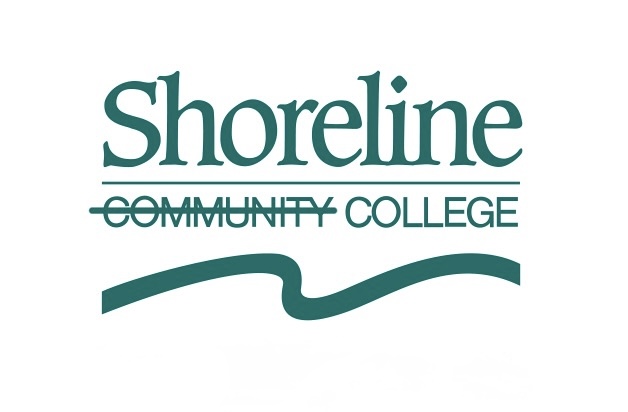A PREVIEW OF SCC’S COSMIC CLASS
Are you fascinated when you look up at the night sky? If so, our college offers an astronomy course.
SCC’s class schedule describes Introduction to Astronomy as “A one-quarter survey course in astronomy, intended for non-science majors“ that studies topics including “the solar system, stellar evolution, galaxies and cosmology.”
Professor Stephanie Bartlett, SCC’s Faculty Program Coordinator of the Physics and Astronomy Department, says these subjects are more complex than they sound.
“That appears to be a short list,” she says, “but those are humongous topics.”
Bartlett has an academic background in physics, and has taught both physics and astronomy over the course of her 20 years at SCC.
A Sampling of the Course
Usually, Bartlett explains, the class begins by studying the Earth itself and what people can see in the night sky from the planet’s surface. This, she notes, is universally relatable because everyone has had at least some experience with it.
Then, the class delves into what Bartlett refers to as astronomy’s “rich and really beautiful” history, which goes hand in hand with the history of science as a whole.
The course zooms out to study the planets within Earth’s solar system before branching out even further to study the sun — more specifically, the sun as an example of a star.
This opens up the topic of the life-cycle of stars, including stellar evolution which describes the birth, life and death of stars, as well as the different characteristics they hold.
Bartlett explains that high mass stars have “short but very glamorous lives” ending in supernovas. Studying this, for instance, raises different points about gravity and what happens with space because it initiates the conversation about black holes.
Later in the course, the subject of galaxies are introduced and the conversation turns to gravitation and the general shape of the universe at large.
Bartlett compares this portion of the class to the experience of viewing images from the Hubble Space Telescope, where small points of light against a dark background are actually galaxy clusters and not stars.
She explains that the quarter tends to wrap up with cosmology, which entails running the clock backwards to question where the universe came from and how it’s evolving.
“Everybody should ponder those larger questions at some point in their life,” Bartlett says. “And it’s a privilege to be able to talk about them with students.”
The Importance of Astronomy
Bartlett explains that astronomy is a valuable subject because it has been studied for thousands of years.
She says that students today can look at the night sky and relate to the fact that across millenniums, people have been doing the same thing.
“They were wondering ‘What’s up there?’ ‘What’s going on?’ ‘Why are we seeing the patterns we see?’” Bartlett says. “They gathered their data in a different way than we do, but we’re still trying to find our place in the universe — and, really, people have always been trying to do that.
“To me, that’s a connection to humanity that’s really beautiful,” she says.
Bartlett also says that although the phrase “nature” is often synonymous with biological systems such as plants and animals, both the night sky and space itself are also included in the definition.
“It’s fun and important to remember that on our planet — one tiny little planet — we’re part of a larger idea of nature that is not just our solar system but the universe as a whole,” she says.
Coursework
Introduction to Astronomy involves quantitative analysis and occasional homework involving calculations. Therefore, it is required that students take the prerequisite Math 99, a college-level algebra course.
For example, while studying stellar evolution, students might look at different data from a star’s lifetime in an effort to map out where it currently is and predict what will happen to it in the future.
Or, they may calculate how long it would take for light to reach the Earth from a faraway distance.
While different labs, measurements, data analysis and other analytical work takes place in the class, homework assignments lean more toward calculations and qualitative work.
However, being a survey course (one that doesn’t require background knowledge from students), Bartlett explains that it provides the freedom to be able to talk about topics other than calculations without being too math-heavy.
“What’s interesting in astronomy is that we’re often working with numbers that are really, really big,” she explains. “So students have to become comfortable with scientific notation, for instance.”
Working with large numbers and using compact notation instead of writing out excessive zeroes is something that Bartlett says she will always review with students to ensure they remember the rules.
Teaching with the Sky
Introduction to Astronomy often features evening classes, allowing the night sky above the campus to serve as the classroom — something Bartlett always made sure to incorporate into the course.
“That was part of the beauty of being (on campus) at night,” she says.
Bartlett also notes that the physics and astronomy department has its own telescope.
“We would just go down to the soccer field on campus,” she says. “I would end class a little bit early and we’d all walk down there, set up the telescope and talk about what we were going to look at.”
Bartlett describes that many students have never looked at the moon through a telescope before.
“It’s really a privilege being part of their first time doing that,” she says.
Due to the master course outline being written to allow different professors the chance to “play to their strengths,” any faculty member is free to include any subject matter they have interest and knowledge about.
“We have some instructors that have a lot of expertise in planets and geology, so they will get really into the planetary science,” Bartlett explains.
Another professor, for example, could delve into the history of NASA and the Space Race.
“As a physicist, I’m very interested in gravitation, so I tend to emphasize galaxies, galaxy clusters and cosmology,” Bartlett adds.
If you are interested in signing up for astronomy in fall quarter, look for “ASTR& 101 – Introduction to Astronomy” in SCC’s course catalogue for class times and other details.








